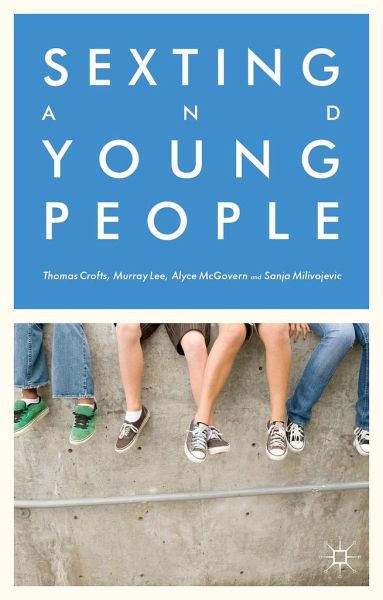
Sexting and Young People
Versandkostenfrei!
Versandfertig in 6-10 Tagen
Weitere Ausgaben:

PAYBACK Punkte
19 °P sammeln!





This book explores young people's practices and perceptions of sexting and how sexting has been represented and responded to by the media, education campaigns, and the law. It analyses the important broader socio-legal issues raised by sexting and the appropriateness of current responses.
Thomas Crofts is Associate Professor and Director of the Sydney Institute of Criminology, University of Sydney, Australia. His research in criminal law, criminology and criminal justice centres on criminalisation and criminal responsibility, with a particular focus on the criminal responsibility of young people. Murray Lee is Associate Professor in Criminology, University of Sydney, Australia. He is author of over 40 refereed journal articles and book chapters on topics including crime prevention, fear of crime, policing, and crime and disadvantage. Alyce McGovern is Senior Lecturer in Criminology, University of New South Wales, Australia. Alyce's research areas focus on police media and public relations, crime and (social) media, craftivism and criminology education. Sanja Milivojevic is Lecturer in Criminology, University of New South Wales, Australia. Her research interests are trafficking in people and transnational crime, borders and mobility, security technologies, surveillance and crime, sexting, gender and victimisation and international criminal justice and human rights.
Produktdetails
- Verlag: Palgrave Macmillan / Palgrave Macmillan UK / Springer Palgrave Macmillan
- Artikelnr. des Verlages: 978-1-137-39280-0
- 2015 edition
- Seitenzahl: 263
- Erscheinungstermin: 8. Juli 2015
- Englisch
- Abmessung: 223mm x 144mm x 24mm
- Gewicht: 469g
- ISBN-13: 9781137392800
- ISBN-10: 1137392800
- Artikelnr.: 42403582
Herstellerkennzeichnung
Libri GmbH
Europaallee 1
36244 Bad Hersfeld
gpsr@libri.de
"Sexting and Young People is marketed primarily to policy makers, academics, educators, school administrators and students. ... Sexting and Young People explores young people's practices and perceptions of sexting, and how sexting has been represented in, and responded to by, the media, education campaigns, and the law. ... use this book for my research and graduate teaching. It is well written and well presented with good linkages between chapters, which provide a clear and coherent interrogation of the issue." (Claire Meehan, Australian & New Zealand Journal of Criminology, Vol. 50 (1), 2017)
Für dieses Produkt wurde noch keine Bewertung abgegeben. Wir würden uns sehr freuen, wenn du die erste Bewertung schreibst!
Eine Bewertung schreiben
Eine Bewertung schreiben
Andere Kunden interessierten sich für











